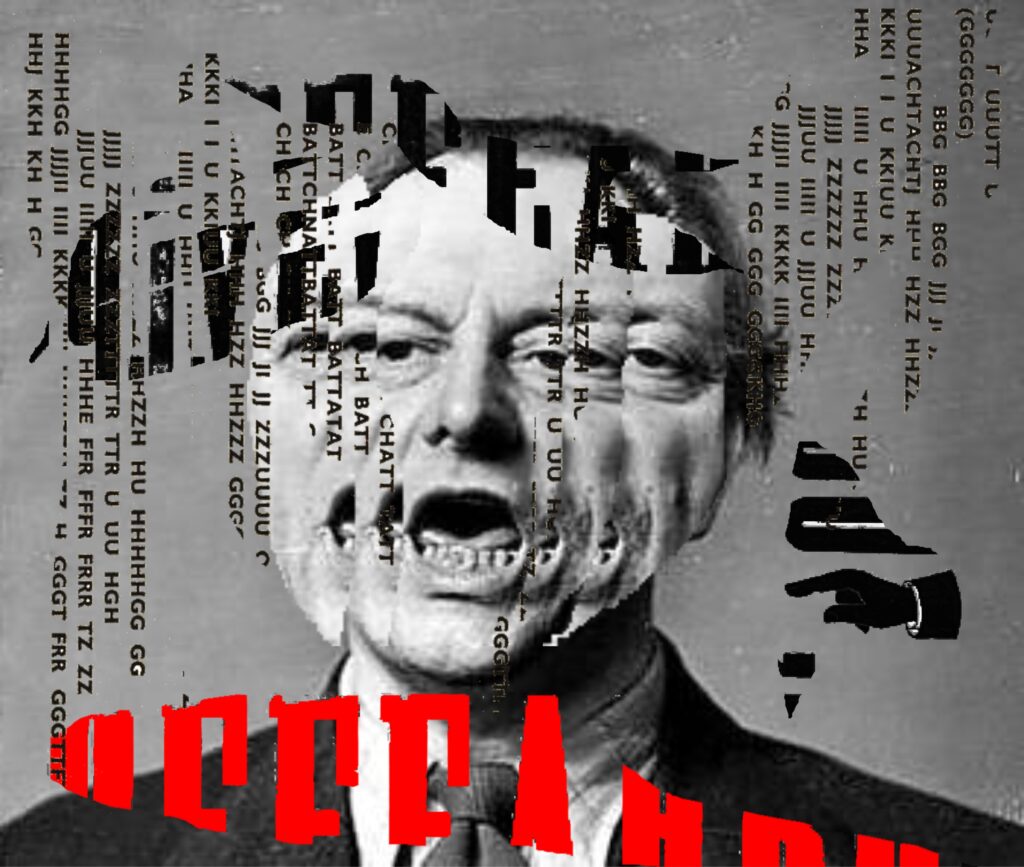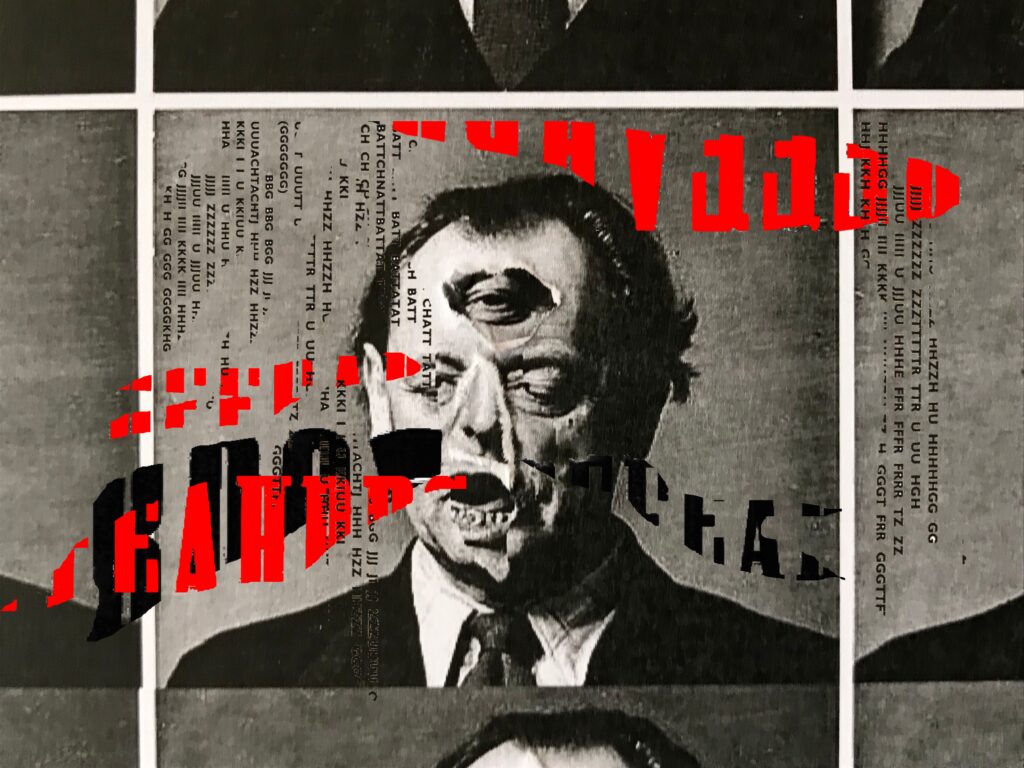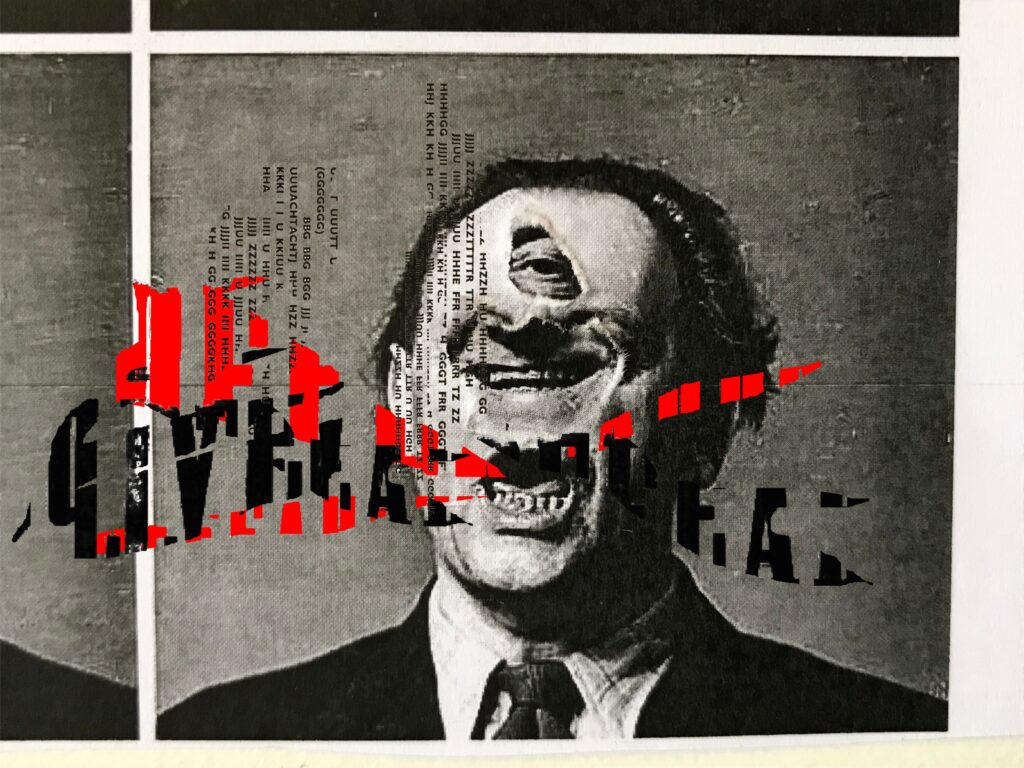At the end of the 19th century, visual representation began to undergo questioning and innovation. In decades eclipsed by the turn of the century, abstraction gradually gained ground in some artists’ minds. James McNeill Whistler preferred to emphasize the visual wonder of his experiences rather than mimetic representation. For his part, Paul Cézanne entrusted the representative act to a reduction of solid elements. As soon as the 20th century began, Mikalojus Konstantinas Čiurlionis completely abandoned figuration in his compositions. A few years later, Hilma af Klimt found in abstraction a way to express the spirituality she experienced. The impact of abstraction affected an expansive radius that continues to emit echoes to this day. Various paths were opened as a result of said reverberation. Resembling a peak near the center, propagated effect disrupted language. As if it were a minefield, loud and vehement experiments took place. Language became a source of reflections and gestures, produced by the impetus of those years. Apollinaire’s Caligrams or the visual poetry of Juan José Tablada are some of them. In both cases, authors maintained closeness to the visual arts of their time. While in the visual field, a reduction of the elements to their minimum expression was pursued, abstraction in language pointed progressively towards the word as a corpus of work. The intervention of this material was not careful, but rather violent, aggressive, and subversive. All these operative attitudes were in frank harmony with the impulses and ideals of those movements.

Futurism, for example, triggered a disintegration of the word, its abstract poems configure the consequence. The corruption of the meaning led to the splitting of the word. The result is naked letters devoid of ties in the order of determination. Floating without axes of gravity, letters were raw material for both poetry and visuality. Depero, Ball, and Hausmann, among others, joyfully explored the folds of phonetic poetry. Closer to archaic frenzy, that poetic expression dislocated meaning by sound drag. It is difficult to specify if the sound shaped the expression, or if this resulted from a word dissection. Of these explorers, Kurt Schwitters stands out, a truncated Dadaist, a solitary avant-garde. His contribution consists of continuous immersion in the depths of waters made up of poetry, morphology, phonetics, visuality, and architecture. He devoted at least 28 years (from 1919 to 1947) to exploratory and experimental work on the letter, the word, meaning, sound, and restitution.
Despite Richard Huelsenbeck’s refusal of admission to Club Dada, Schwitters collaborated with Raoul Hausmann. With different intonations and alternately reciting the Hausmann-Schwitters duo, appeared in 1921 before Germany still uneasy about the Dadaist scandal of the previous February. Between mouth modulations and repetitive loops, poems like Cigarren and Anna Blumme by Schwitters and f m s b t ö z ä u by Hausmann appeared. In 1922 Hans Richter met Schwitters under very unique circumstances. Richter was accompanied by Tzara, Arp, Lissistzky, and Doesbourg, among others, on the eve of the annual Bauhaus festival. Without warning, Kurt Schwitters bursts into the room dressed with two large folders on his torso, barely supported by a couple of ropes around his shoulders. In solemn silence, he placed a piece of cardboard painted with the letter W on his chest and began a declamation that included shouts, whistles, and howls of various possible vocal variations of the same letter. The poem lasted a couple of minutes and at the end, he made a respectful bow. The following year, Schwitters appeared in various Dutch cities with Nelly, Theo van Doesbourg, and Huszar. His interventions, which consisted of a mixture of barking and snorting, were recovered in local newspapers. In some articles they did not hesitate to synthesize: Dada means to bark. Also in 1923, at the end of the year, Schwitters and Hausmann repeated as a duet in their native Hanover. Schwitters recited in his strong voice before an audience plunged into darkness. At every second sentence, that gloom was interrupted with a light that illuminated the room and revealed, in silence, a grotesque posture of Hausmann. The result was a pendulum between sonorous darkness and silent clarity.

The gradual release of the word from its associations gave Schwitters the impulse to continue in that experimentation where sound took center stage and presence. From this perspective, the sound cadence allowed to give value to the word, the letter, the voice, and the sound itself. Just a couple of years later, in 1925, Ursonate was publicly presented for the first time. In front of an audience completely alien to the avant-garde of the time, Schwitters launched his sound procession. The initial shock caused consternation and some subtle protests that the hostess, Mrs. Kiepenhener, quickly managed to stop. After a few minutes, the tension accumulated by the repressed impulse exploded in collective hilarity. The magnitude was such that the public coughed, cleared their throats, and lost their breath due to uncontrolled laughter. Above that screeching mass made up of laughter, Schwitters continued his poetic liturgy as if surfing the sound waves with his powerful voice and his unwavering conviction reaching maximum intensity. Hans Richter, who witnessed that moment, was convinced that hilarious sound became accompanying music for Schwitters’s labyrinthine sonata. After the piece was finished, the audience approached Schwitters to offer their admiration and appreciation with great enthusiasm. That night, the public actively participated in an act of phonetic poetry.
Anna Blume and Ursonate are probably Schwitters’ best-remembered poetic pieces. If in the first piece, a reality appears that rubs shoulders with other layers of it, in the second one, the word is freed from meaning to conquer a sound that is as evocative as it is constructive by itself. Ursonate consists of four parts, an introduction, and an ending. In it, musical elements are mixed: rondo, themes, variations, scherzo, successions, cadences, tonality, notation… Conditions are also met for a sonority embodied in the performer, composed based on compulsive repetitions, psychic explosions, contrasting rigor, trembling vibrations, brief and imperious metallic impetus, persistence, solemnity, surprising capacity, lung elasticity, voluntary inversion between monotony and agitation, painful impatience, vivacity… Although the signs with which he constructs the notation seem to follow a rigor, Schwitters himself warns that the writing provides a very incomplete indication of the richness that can be achieved thanks to the many possible interpretations. If he insists on a correct reading, he does so to stimulate the work’s assimilation capacity, as well as prevent thoughtless criticism: “…who has understood everything has the right to criticism”, he cuts off. For Schwitters, such assimilation is achieved with lived experience, with the bodily experience of listening to one’s interpretation, that is, in the materiality of the work. He emphasizes: “…the sonata must be listened to rather than read”. Thus, the path laid out is serious work that implies learning to read which leads to understanding and finally to listening, embodied and manifested in the experience of the work itself. For its part, those who decline in the face of such a challenge and rejoice in an expectant experience, pay attention, at least and fragmentarily, to some lines that constitute the fabric of condensed cosmos that underlies it. It is possible to stop at punctual pronunciation. Short, double, and long vowels, tonic, and unstressed consonants followed, cut, suppressions, and buzzes. The pattern of indications or suggestions that Schwitters proposes may also be a reason for attention. Underlined with red for high voices, in black, low ones. Accordingly, a thick red stripe means ff, and a thin one only f. Capital letters only serve as paragraph separators, mere spellings for the best recognition of a line. Therefore, A is pronounced as a.

Looking at this level we can find the folds and reliefs arranged on the plane, in this case, on paper. There, spelling becomes representative, perhaps of images with which a sound reality is constituted. Letters appear one after the other like lines of a resonant architecture. To the eye, they constitute a horizon of vibrant graphemes. Taken together, they engender mischief, a corrupted pictography, since here not only objects are represented, but they are, contrary to the rule, resonant, and sonorous. Letters vibrate in their reiteration and with the cadence of their insistence they shed the last trace of logical sense that they harbor until they are completely emptied and become nodes of pure sonority. Consequently, the piece oscillates between phonetic poetry and visual poetry. It unfolds a countenance to form another, it is a double face. It is a sound-visual architecture, a synthesis.
In this piece, Schwitters recovers and synthesizes the results of his previous intentions, experiences, and experiments. Ursonate emerges 6 years after that July 1919 in which Schwitters finds a piece of publicity for the “Commerzbank” from which he extracts the expression “Merz” with which he baptizes not only his pharaonic work (collages, assemblages, reliefs, sculptures, theater, poetry, typography…) but also allows him to constitute a point of reflection and experimentation on his interests regarding the constructive configuration of the creative act. If we consider the Merzbau as a temple, Ursonate is, consequently, the choir that reverberates within.
